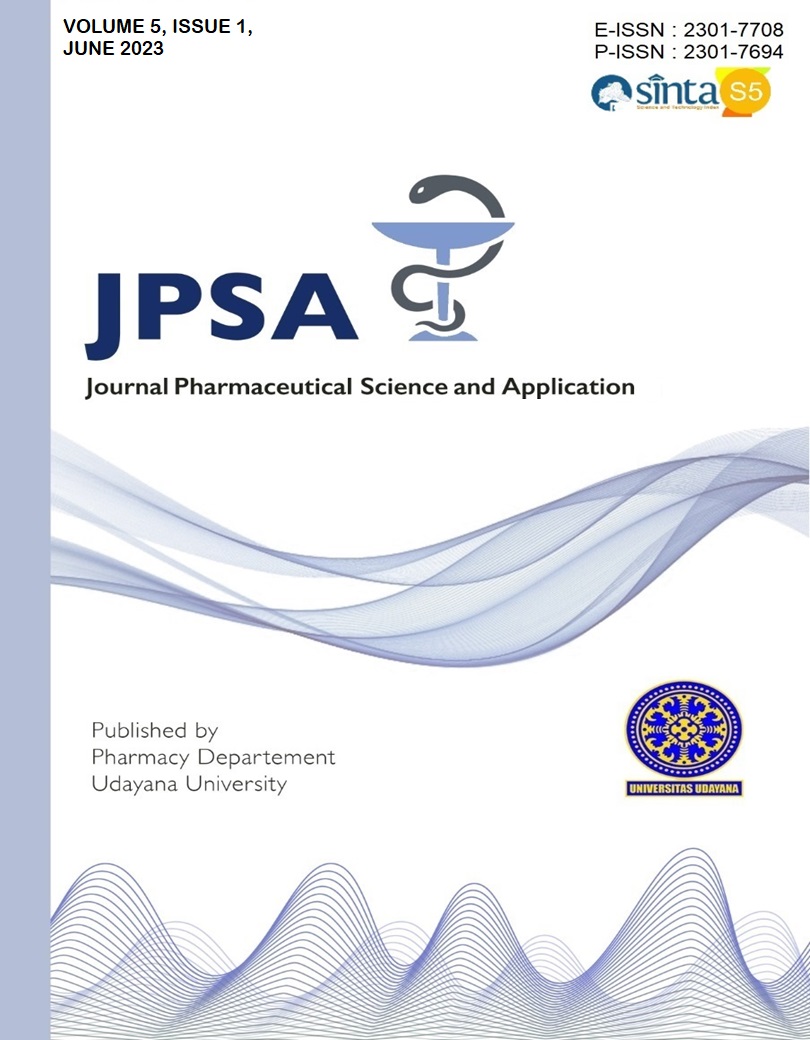THE RELATIONSHIP BETWEEN KNOWLEDGE AND COMMUNITY BEHAVIOR IN UTILIZATION OF TELEPHARMACY SERVICES IN THE TABANAN CITY
Abstract
Background: Telepharmacy appears to be a technology that represents a unique and innovative way to deliver quality pharmaceutical services to rural and regional areas in particular. Providing appropriate pharmaceutical services to patients and conducting consultations with other health workers have an important role in reducing the use of inappropriate and less effective drugs. The development of telepharmaceutical services can be influenced by the knowledge and practice of the community. Objective: to determine the relationship between knowledge and community practice on the use of telepharmaceutical services in Tabanan City. Methods: This research is an observational study using a cross-sectional design. The sample in this study amounted to 100 people who met the inclusion and exclusion criteria. The sample was taken from the population using a purposive random sampling technique. The research instrument used in this study was a questionnaire (questionnaire), collecting data formally for the subject to answer questions in writing. Data were analyzed using computer software, namely the Chi-square test. Results: The respondents who have sufficient knowledge, as many as 55 people have sufficient behavior, and as many as 42 people, while those who have good behavior, 13 people and respondents who have good knowledge, 45 people have sufficient behavior, as many as 23 people and behavior well as many as 22 people (p-value <0.05). There is a relationship between knowledge and practice regarding the use of telepharmaceuticals in the community of Tabanan City. Conclusion: there is a relationship between knowledge and practice regarding the use of telepharmaceuticals in the community of Tabanan City.
Keywords: Knowledge; Practice; Telepharmaceutic
Downloads

This work is licensed under a Creative Commons Attribution 4.0 International License.
Authors who publish with this journal agree to the following terms:
Authors retain copyright and grant the journal right of first publication with the work simultaneously licensed under a Creative Commons Attribution License that allows others to share the work with an acknowledgment of the work's authorship and initial publication in this journal.
Authors are able to enter into separate, additional contractual arrangements for the non-exclusive distribution of the journal's published version of the work (e.g., post it to an institutional repository or publish it in a book), with an acknowledgment of its initial publication in this journal.
Authors are permitted and encouraged to post their work online (e.g., in institutional repositories or on their website) prior to and during the submission process, as it can lead to productive exchanges, as well as earlier and greater citation of published work. (See The Effect of Open Access).

This work is licensed under a Creative Commons Attribution 4.0 International License.


 HOME
HOME
















